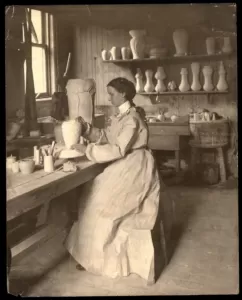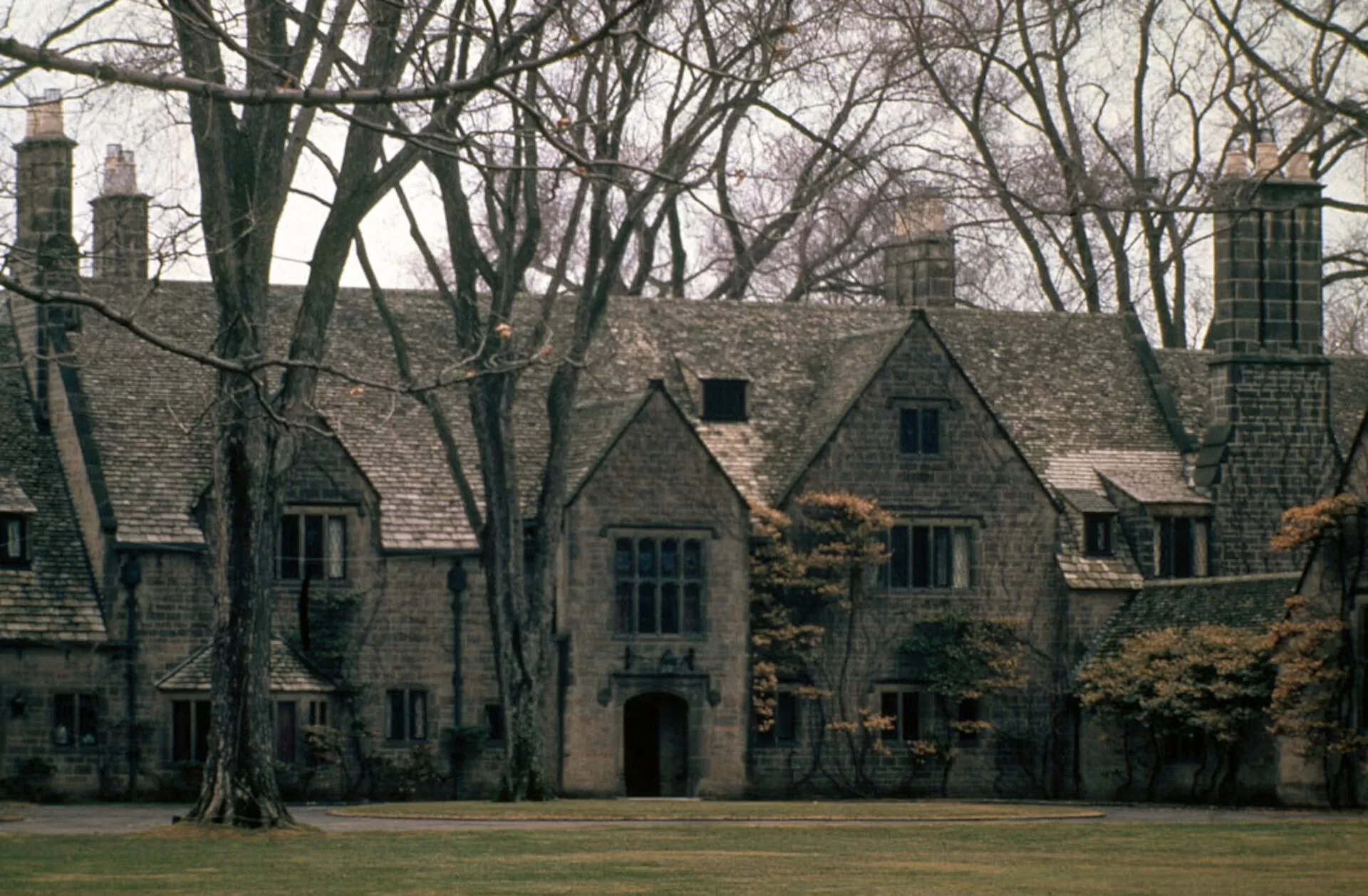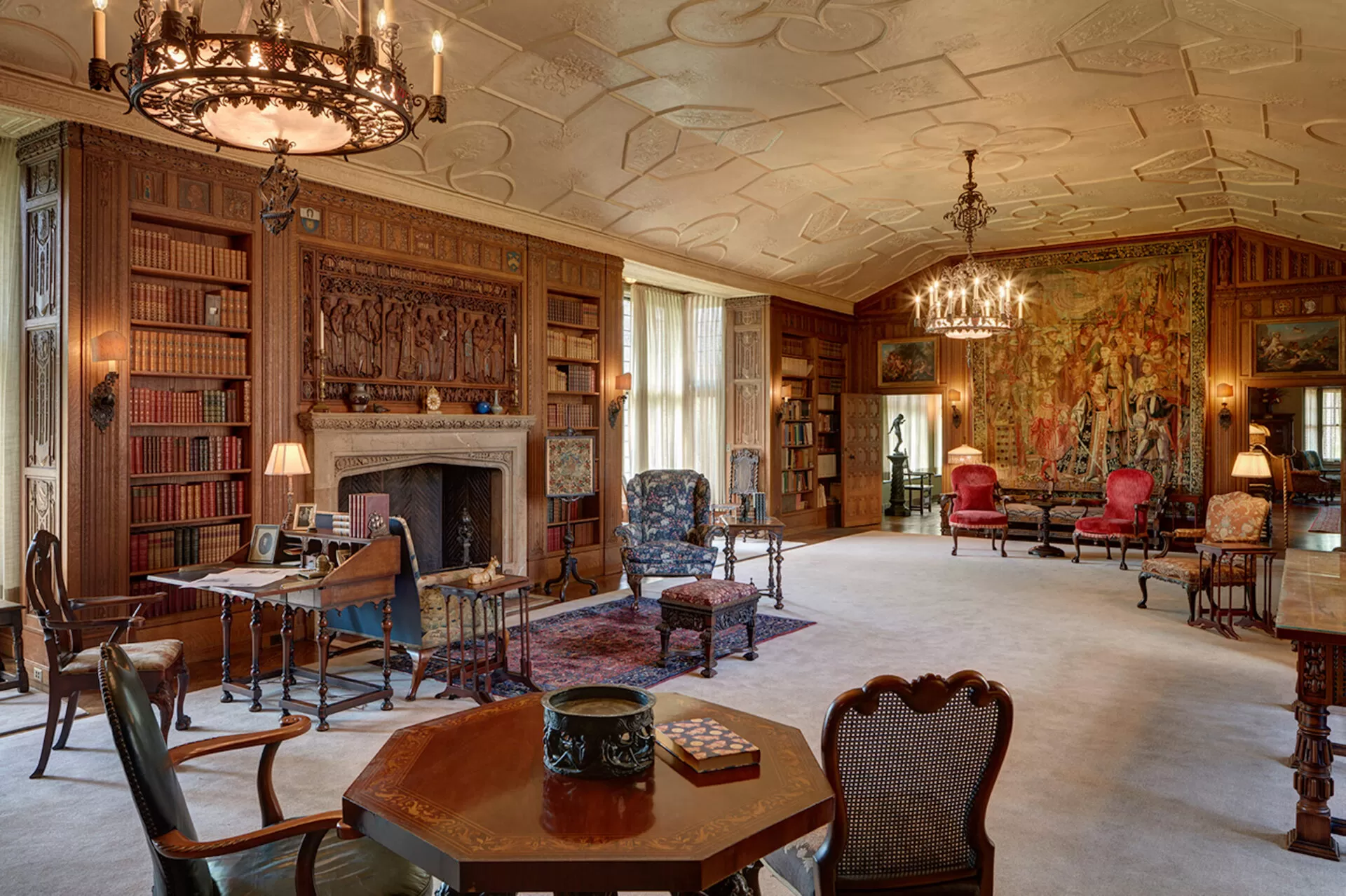Conference Highlights Detroit’s Rich Arts and Crafts Legacy
Editor’s note: the following article is by guest writer Lisa Koenigsberg, Ph.D., the President and Founder of Initiatives in Art and Culture. Initiatives in Art and Culture hosts an annual traveling conference on the Arts and Crafts movement. Mrs. Koenigsburg and Lisa Worley of the Edsel and Eleanor Ford House will feature in the upcoming session as part of Arts & Crafts In August: “The Art and Craft of the Ford House” Click here for more information on the Zoom session offered as a part of Arts & Crafts In August.
The Arts & Crafts Movement in Detroit in Art and Culture’s 25th Annual Conference
by Lisa Koenigsberg
Click here for the schedule and for more information about registration
Detroit was a center for the Arts & Crafts Movement in the United States: the Detroit Society of Arts and Crafts, founded in 1906, played a pivotal role in championing the Movement while George G. Booth, among its founders and profoundly influenced by William Morris, also contributed to the establishment of the City’s art and educational institutions. Initiatives in Art and Culture (IAC) 25th Annual Arts + Crafts Conference (September 27 — October 1, 2023) taking place in Detroit explores the City’s role in the Movement.
In a keynote session at the Detroit Athletic Club (Albert Kahn; 1913). Richard Guy Wilson highlights Detroit’s rich cultural history, focusing on its factories, skyscrapers, and contributions to the Movement while Jim Tottis discusses two iconic Detroit skyscrapers, both designed by Wirt C. Rowland of Smith Hinchman & Grylls toured later in the day: Union Trust (1929; now the Guardian Building) and the Penobscot Building (1928). At the DAC, Collections Curator Mike Crane will lead a tour of the Club’s impressive art collection.
Attendees will then visit the Music Hall Center for the Performing Arts (1928; William Kapp of Smith, Hinchman & Grylls) led by Vince Paul, President and Artistic Director, and the Fox Theatre Detroit (1928; C. Howard Crane), known for its opulent interior reflecting Persian, Indian, and East Asian influences.
The day concludes at The Monarch Club in the neogothic Metropolitan Building (1924; Weston & Ellington) which offers views of downtown Detroit.


 1. Mary Chase Perry at Pewabic Pottery in Brush Park Stable Studio, 1903-1907. 2. William B Stratton with Mary Chase Stratton, The William B. and Mary Chase Stratton House, 1927. Artist Mary Chase Perry and Architect William B. Stratton designed a home personal to them, rooted in an English Arts and Crafts manner with flairs of modernity. 3. Mary Chase Stratton for Pewabic Pottery (Maker), Jar, 1932 or earlier, Cast stoneware clay, 9 ½ x 7 inches. Gift of George Gough Booth and Ellen Scripps Booth through The Cranbrook Foundation, CAM 1932.13.
1. Mary Chase Perry at Pewabic Pottery in Brush Park Stable Studio, 1903-1907. 2. William B Stratton with Mary Chase Stratton, The William B. and Mary Chase Stratton House, 1927. Artist Mary Chase Perry and Architect William B. Stratton designed a home personal to them, rooted in an English Arts and Crafts manner with flairs of modernity. 3. Mary Chase Stratton for Pewabic Pottery (Maker), Jar, 1932 or earlier, Cast stoneware clay, 9 ½ x 7 inches. Gift of George Gough Booth and Ellen Scripps Booth through The Cranbrook Foundation, CAM 1932.13.
Visits to Pewabic Pottery (1903; William “Buck” Stratton; founded by Mary Chase Perry and Horace J. Caulkins) which remains a leading pottery and to The Players, an amateur gentlemen’s theatrical club highlight two Movement monuments in the City. The Players is housed in a Florentine Renaissance-style Playhouse (1925; William Kapp of Smith, Hinchman, & Grylls). Gargoyles and large urns flanking the main stage by noted architectural sculptor Corrado Parducci and six “tapestries” on canvas in The Great Hall by artist Paul Honoré exemplify collaborations, demonstrating relationships among craftsmen, and revealing how expressions of the Movement were realized.
A visit to the David Whitney Mansion (1894; Gordon W. Lloyd), a Romanesque Revival-style residence commissioned by lumber baron David Whitney Jr. permits viewing of the stained-glass windows by Tiffany Studios. The importance of clubs is underscored by an evening at the Scarab Club clubhouse (1928, Lancelot Sukert) which bears the Club’s logo executed by Pewabic. Tours are complemented by discussion of the Club’s history; Minoru Yamasaki’s architecture and the Arts & Crafts; and the Detroit Institute of Art (DIA). A tour of the DIA explores the Beaux Arts structure (1924; Paul Cret), its interior architectural features (including many by the City’s preferred producers: metalwork and light fixtures by Edward F. Caldwell & Co., of NYC, ceramic by Pewabic, and ironwork by Samuel C. Yellin), and its Arts & Crafts collections.
Above: Albert Kahn, Edsel and Eleanor Ford House, 1927. The Fords traveled to England with Kahn to develop the design approach of the house; there, they were attracted to the vernacular architecture of the Cotswolds and asked Kahn to draw upon that for inspiration.
The Cotswold-inspired Eleanor and Edsel Ford House (1927; Albert Kahn) reveals English influence and the use of suppliers from New York and Boston. The House features interior metalwork by Edward F. Caldwell & Co. with some later interiors by Walter Dorwin Teague and Polly Jessup in a Modernist style. The gardens, which blend woodlands, meadows, and wetlands were the vision of landscape designer Jens Jensen. Underscoring Albert Kahn’s importance as a Detroit architect, Michael Hodges will speak on his global influence while Meg Caldwell considers the metalwork of Edward F. Caldwell & Co.
Above: Library in Cranbrook House designed by Albert Kahn and completed in 1908. It was the residence of George Gough Booth and Ellen Scripps Booth. Featuring a carved wood overmantel, 1918, by Johann (John) Kirchmayer, bequest of George Gough Booth and Ellen Scripps Booth to the Cranbrook Foundation. Also featuring a tapestry designed by Albert Herter, The Great Crusade, 1920, Manufacturer; The Herter Looms, Inc., New York, New York. Cotton, wool and silk tapestry, 156 x 120 inches, gift of George Gough Booth and Ellen Scripps Booth, CAM 1944.83. Lamps and lighting in the home was designed by Edward F. Caldwell & Company.
Cranbrook, a renowned educational community founded by George G. Booth, and the Tudor-inflected Cranbrook House (1908; Albert Kahn) underscore the importance of English influence to the Booths, while talks by the Research Center’s team Kevin Adkisson, Gregory Wittkopp, and Nina Blomfield explore other influences on the expression of the Movement at Cranbrook. A range that Is underscored by viewing the Cranbrook Campus Dining Hall (1936; Eliel Saarinen); the neogothic Christ Church Cranbrook (1928; Oscar Murray of Grosvenor Goodhue) with features by renowned craftsmen of the Movement; the “moderne” Eliel Saarinen House (late 1920s), the Cranbrook Archives and Collections Wing; the Eliel Saarinen-designed Kingswood School (1931) and Frank Lloyd Wright’s Usonian Smith House (1950).
Visits to Woodlawn Cemetery, featuring a mausoleum designed by Stanford White, and Belle Isle, a vast island park housing such institutions as the Belle Isle Aquarium, cap the conference which promises to offer a deep dive into the city’s cultural heritage and its significant contributions to the Movement.
If you are interested in more information for September’s conference, please visit the following website:


